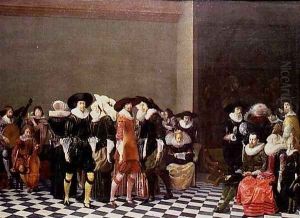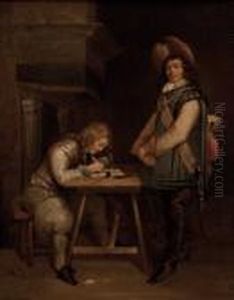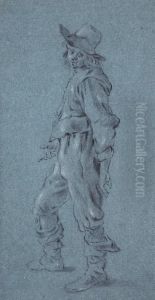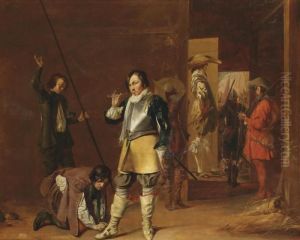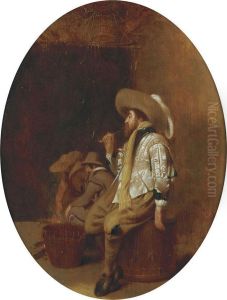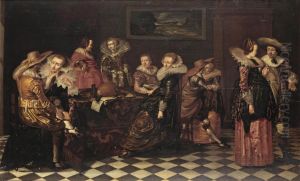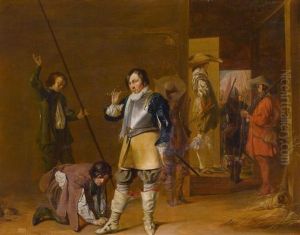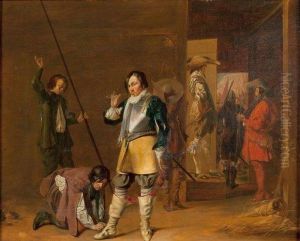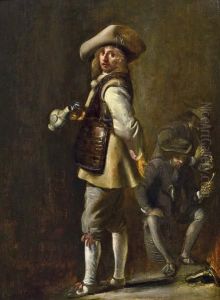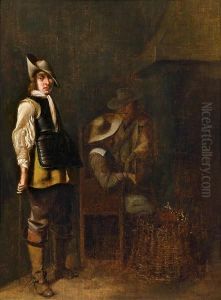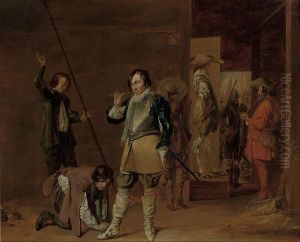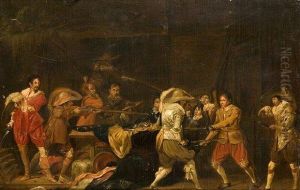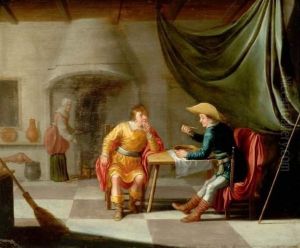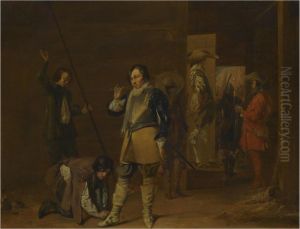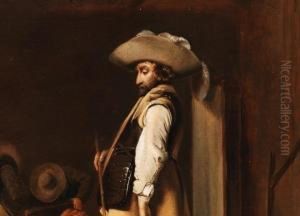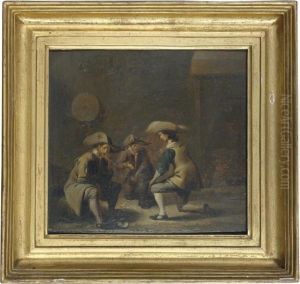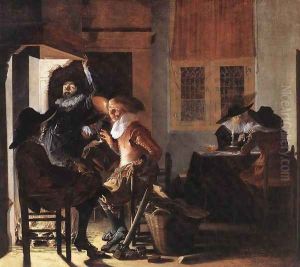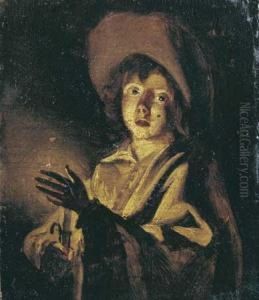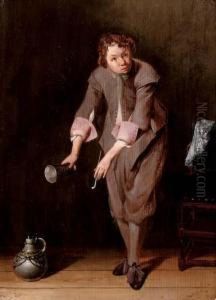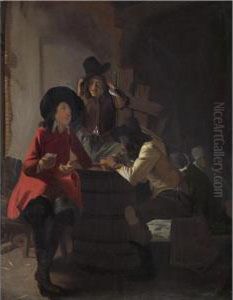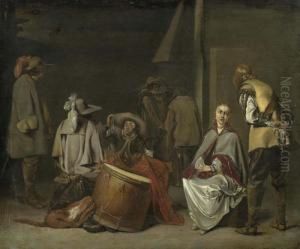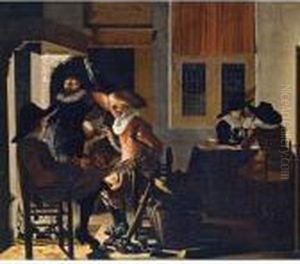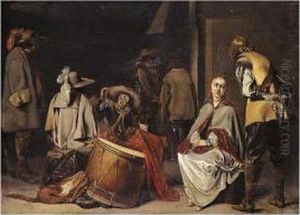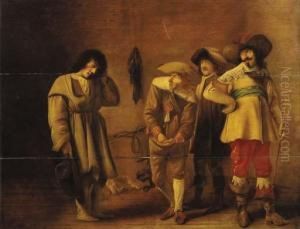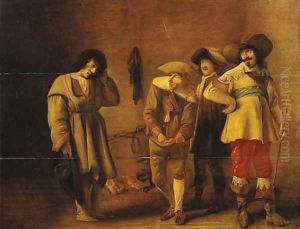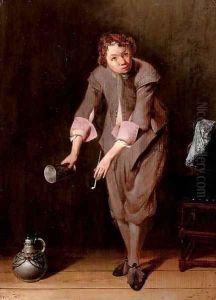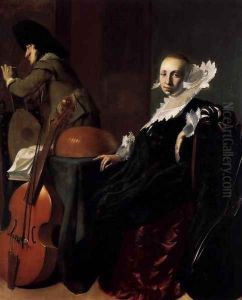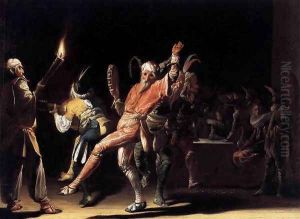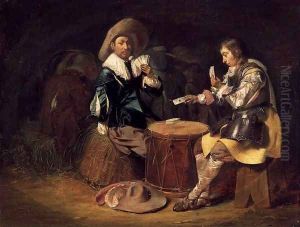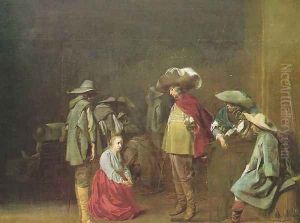Willem Cornelisz. Duyster Paintings
Willem Cornelisz. Duyster was a Dutch Golden Age painter from Amsterdam. Born in 1599, Duyster is mainly known for his genre scenes, guardroom scenes, and military subjects. He was named after the Duyst van Voorhout family into which he was born. Not much is known about his early life or training, but he is believed to have been a student of Pieter Codde.
Duyster's works are characterized by their small scale and the skillful use of lighting and shadow, often emphasizing the drama of the scenes he depicted. His compositions frequently showed soldiers and other figures in domestic settings or taverns, engaging in gambling, drinking, or the merriment of daily life. His technique was meticulous, and he had a particular talent for rendering different textures, such as metal, leather, and fabric, with great realism.
Duyster collaborated with other artists, including Codde, on occasion. His career was relatively short, as he died at the young age of 36. Despite this, he left behind a significant body of work that provides a window into the everyday life and military culture of the Dutch Republic during its Golden Age.
Duyster's paintings were appreciated for their narrative quality and their detailed portrayal of contemporary fashion and interiors. However, after his death, his work was somewhat forgotten, overshadowed by the likes of Rembrandt and other prominent Dutch artists of the time. It was only in the 19th and 20th centuries that his contributions to Dutch genre painting were re-evaluated and gained recognition.
Willem Cornelisz. Duyster passed away in 1635. His art, which captures the vivacious spirit and the darker undertones of his era, continues to be studied and admired for its vitality and historical value. Although he is not as widely recognized as some of his contemporaries, Duyster's work remains an important part of the narrative of Dutch art history.
